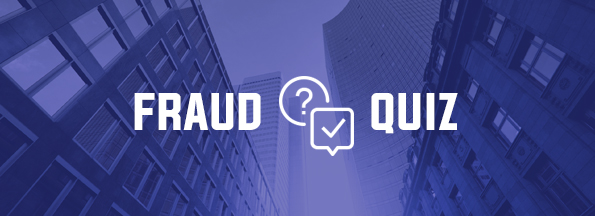Is Your Industry a Fraud Hot Spot?

Thanks to the Association of Certified Fraud Examiners (ACFE), we know quite a bit about organizational fraud and abuse by way of its annual Report to the Nations. The data behind these annual reports is based on actual cases researched by fraud examiners and includes a standard set of measures across cases.
One part of the data that may be interesting to you is the variation of fraud and abuse across types of industries. ACFE has produced an infographic based on the 2016 report titled How Much Does Fraud Cost Your Industry? that summarizes part of the data, and we provide some additional background here.
Banking and Financial Services Top the Charts
Banking and financial services accounts for almost 17% of the total cases reported, with government and public administration, manufacturing, health care, and education all experiencing more than 5% of the cases, with retail close behind at 4.8%.
On the other end of the spectrum, communications, mining, wholesale trade, arts and entertainment, utilities and real estate each accounted for less than 2% of cases. To some extent, these numbers reflect the size of the industry, and specifically which industries are most likely to engage fraud examiners. However, the types of opportunities for fraud and abuse (the report refers to these as schemes) also vary by industry and will correlate with actual criminal activity.
Opportunities or schemes are defined by the type of fraud committed. Many of these involve financial transactions within the organization, including billing, check tampering, expense reimbursements, financial statement fraud, payroll, and register disbursements. Others are direct thefts of valuable goods or cash, like skimming, cash theft, non-cash theft, and cash larceny. Among these schemes, billing fraud is the most frequently reported, reflecting the fact that this is an activity virtually every organization performs—it is truly an equal opportunity fraud.
Corruption Crosses Industry Lines
Somewhat surprising is that the most prevalent scheme of all is corruption—it is the single most common fraud for most industries. Corruption accounts near or slightly above 50% of the reported cases in mining, transportation, manufacturing, oil and gas, and technology, and is not less than 20% of cases in any industry except professional services. Since manufacturing is also a higher risk industry overall, its level of fraud by corruption is very high, with 93 cases in 2016. Other industries with a high number of corruption cases include banking and financial services (138) and government and public administration (88).
The median cost of fraud varies from a low of $62,000 in education to a high of $500,000 in mining. For the other industries with most reported cases, banking and financial services was $192,000, government $133,000, manufacturing $194,000, and health care was $120,000. The costs are significant in all industries, indicating that anti-fraud measures are well worthwhile across the board.
To get a closer look at fraud in your industry, take a look at the 2016 Report to the Nations on Occupational Fraud and Abuse.

